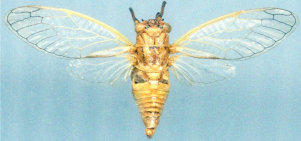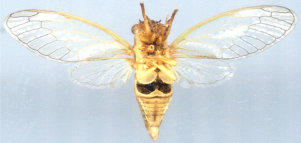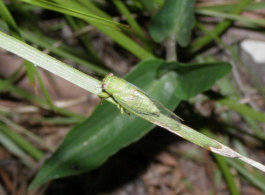Eastern Grass-buzzer
Urabunana sericeivitta (Walker, 1862)
© Popple Creative Industries 2014–2025
Male
Female
Species number (TNS):
322.
Fore wing length:
11–13 mm.
Distribution and seasonality:
From Bundaberg in Queensland south to
near Sydney in New South Wales and
inland to the Great Dividing Range. An
isolated population also occurs near Tully
Gorge, north Queensland. Adults occur
from October to April.
Notable localities:
Near Tully Gorge (A. Ewart), Brookfield,
Toohey Forest (Brisbane), Kalbar.
Habitat:
Populations typically occur in areas of
kangaroo grass growing in open forest,
although other grasslands in humid areas
are also inhabited. In its habitat, the
species can become common and
widespread after rain.
Calling song and behaviour:
A high-pitched buzz that erupts in a series
of broken phrases: "zigger-zigger-zigger-
zigger"; the call then returns to the long
buzz again and repeats several times.
Singing typically occurs in bright sunshine.
Individuals of this species are weak fliers
and can easily be captured by hand.
Colour variation:
The standard form is straw coloured, with
some green on the wings and occurs
throughout the species’ range. A vivid green
form also occurs from around Rosewood
and the Fassifern Valley in Queensland
south to Woodenbong in northern New
South Wales.
Similar species:
Bent-winged Grass-buzzer can be found in
a similar habitat and is superficially similar.
However, U. sericeivittta lacks the strongly
angled fore wings characteristic of that
species.
Habitat

















dr-pop.net database record
Currently known extent


